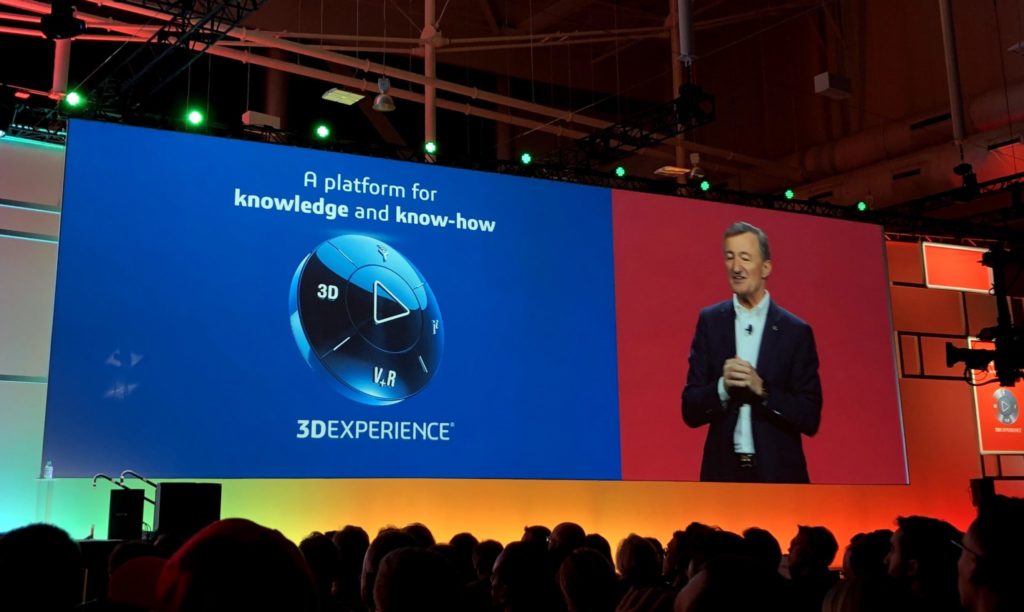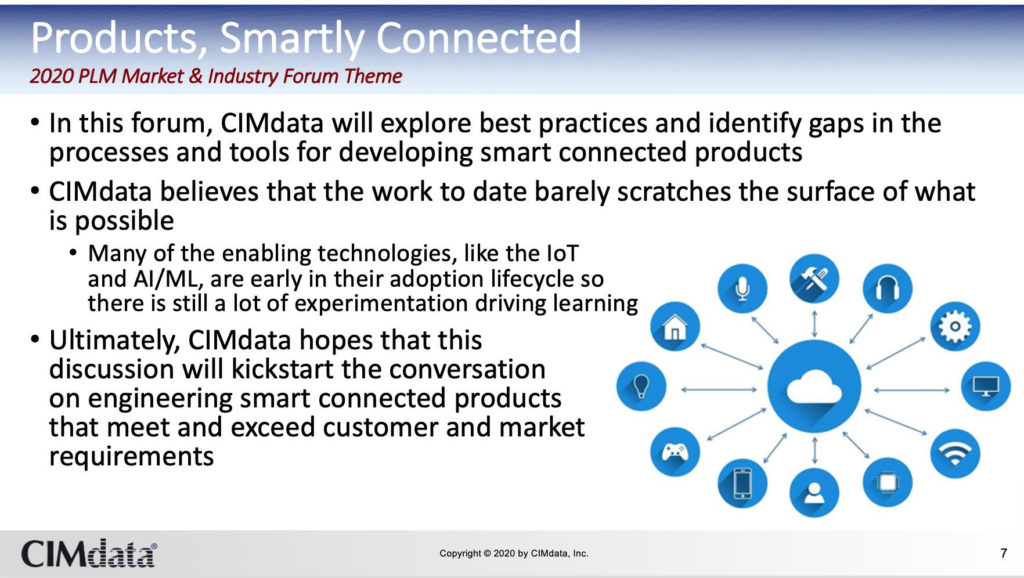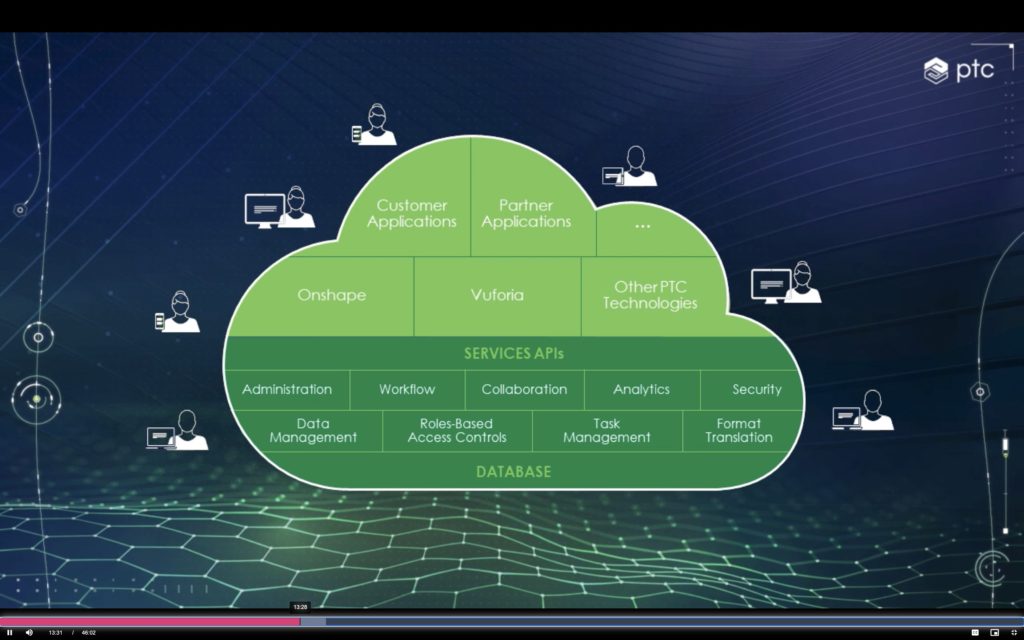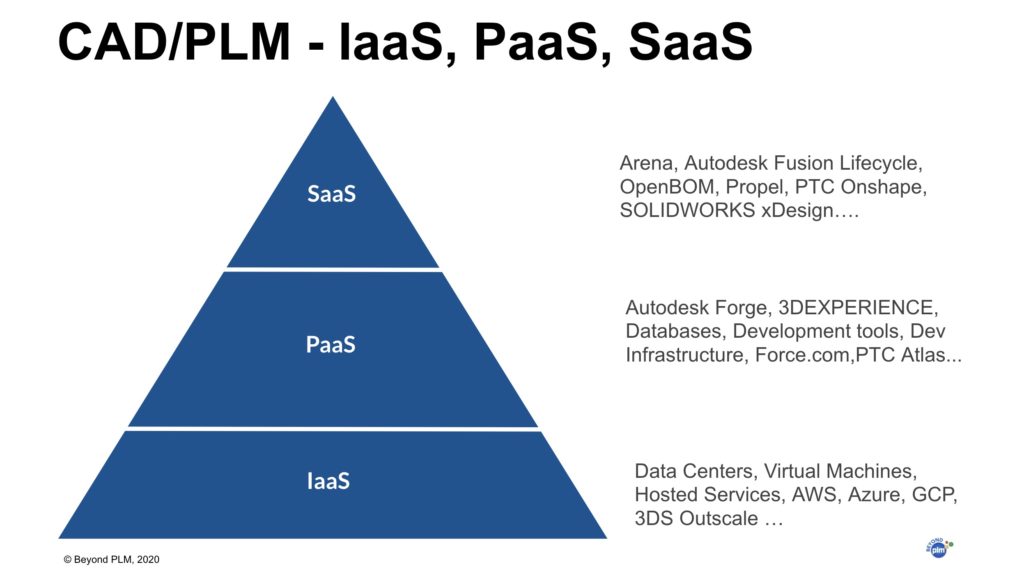
Unless you lived under the rock, you’ve heard about SaaS, PaaS, and IaaS. If you will try to figure out the details, you can find a lot of controversy and marketing materials using these names to explain strategies, technologies, and applications. I share my thoughts earlier about PaaS, SaaS, and IaaS. Check these links out.
CAD and PLM companies spent a substantial amount of time for the last decade developing a variety of cloud applications and tools. Until very recently these companies mostly used “cloud” words to position what they do. Another way to position it was speaking about “platforms”. Here is the example of Dassault Systemes. Read my article 3DEXPERIENCE – The Platform is here.

It came with PLM platform development, which had nothing to do with cloud at all, but pointed out the trend of platformization and development of the connected application. The last one was using “cloud” visualization, but not necessarily was doing something with cloud tech. Here is the CIMdata slide showing the “connected applications” trend.

However, for the last year, I’ve seen how CAD and PLM companies started to navigate more to use SaaS as a differentiator to show the advantages of their applications and platforms. Last week, PTC LiveWorx 2020 conference demonstrated how PTC with the acquisition of Onshape is mixing both SaaS and Platform by announcing the PTC Atlas Platform.

In my article, I want to give you some ideas about how IaaS, PaaS, and SaaS are positioned in CAD and PLM world.. Because vendors are using different terminology, it is hard sometimes to draw a clear line between PaaS and SaaS. The world “platform” used often is the major contributing factor to the confusion.

For IaaS, I can see a mix of market leaders such as AWS, Azure, and other infrastructure providers. Although, some PLM companies are looking at specific hosting environments dedicated to their developers, applications, and infrastructure.
PaaS is a mix of tools developed by CAD (eg. Dassault Systemes) and non-CAD vendors (eg. Salesforce). The recent announcement of PTC Atlas is also a good candidate to be mentioned here, although PTC didn’t mention the word PaaS in their announced.
SaaS includes a number of applications available online. Some of the apps are CAD (Onshape, xDesign), and some of them are more data management and PLM (eg. Arena, Autodesk Fusion Team (A360), OpenBOM, Propel) that available to users via subscription. Multi-tenancy is a key technological advantage when it comes to SaaS applications.
What is my conclusion?
CAD and PLM companies are moving into the second decade of cloud development. I expect more mature development of technologies, tools, and services provided by CAD, PLM and other vendors. In CAD and PLM business, buzzwords rarely delivered a winning position. Nevertheless, for the last decade, SaaS tools became a place to redefine how value is delivered to customers. Therefore, I can see PLM SaaS and multi-tenancy as a strong competitive factor and technological differentiator. Just my thoughts…
Best, Oleg
Disclaimer: I’m co-founder and CEO of OpenBOM developing cloud based bill of materials and inventory management tool for manufacturing companies, hardware startups, and supply chain. My opinion can be unintentionally biased.
The post CAD/PLM Trajectories Between IaaS, PaaS, and SaaS appeared first on Beyond PLM (Product Lifecycle Management) Blog.



Be the first to post a comment.